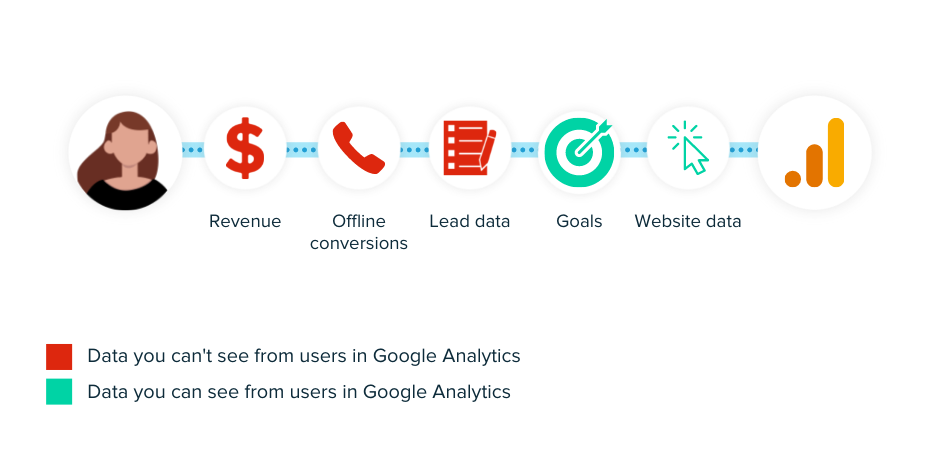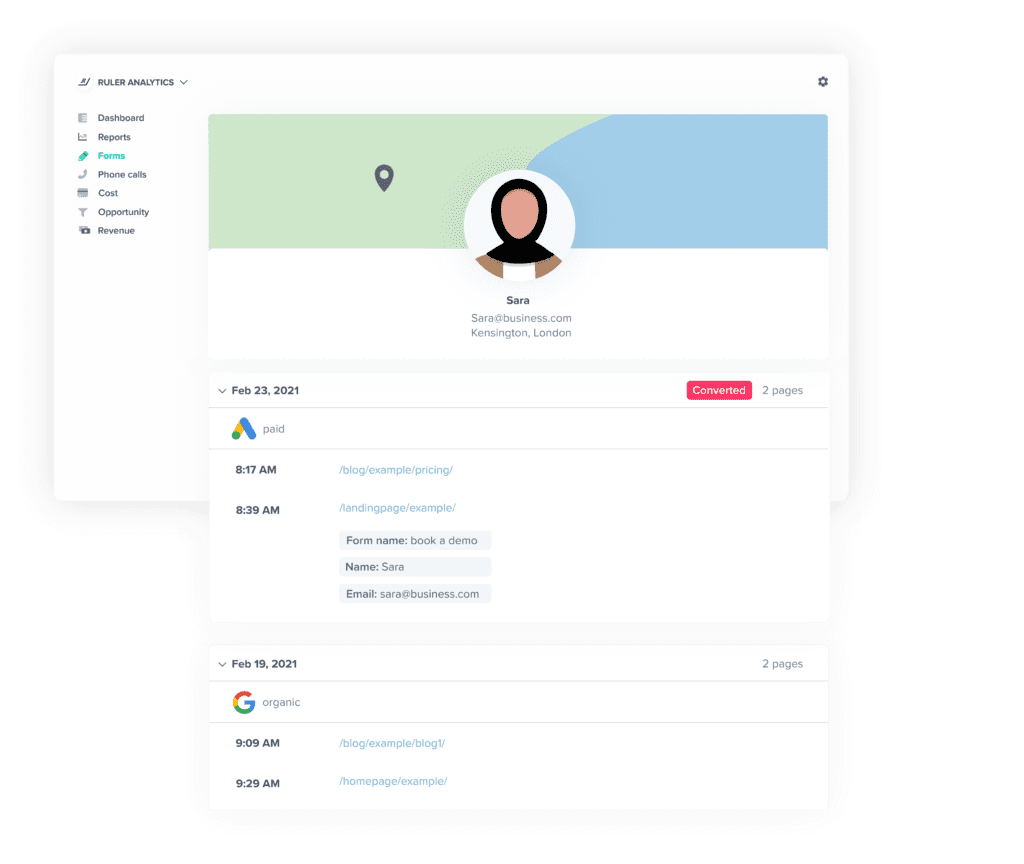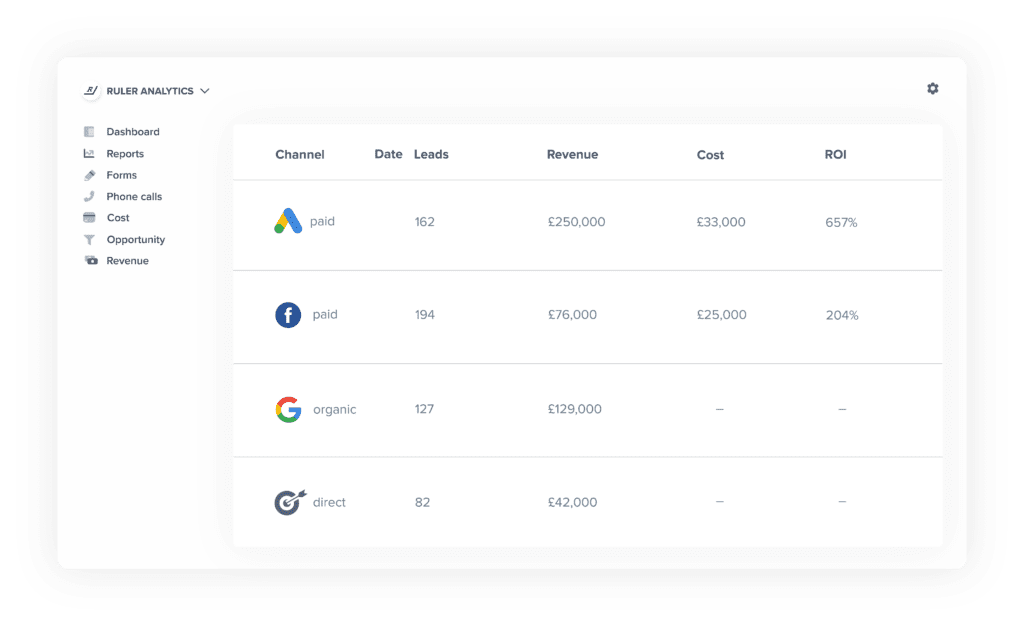There are key benefits to integrating Google Analytics with Ruler Analytics. We share what you stand to gain by implementing marketing attribution to your main analytics tools.
According to W3Techs, 53% of all websites on the internet use Google Analytics (that’s more than 10 times the next most popular analytics option).
But on the whole, businesses use GA4 as a marketing performance tool, as opposed to what it actually is, a website performance tool.
While still important to use, this is an important nuance to making sure you’re getting what you need out of your tools.
In this blog, we walk you through:
So, let’s get stuck in.
Google Analytics 4 offers marketers a wealth of information about how users find and interact with your website.
With just a little bit of code, GA4 can integrate with your shopping cart to enable you to track revenue and understand how your marketing influences those purchases. But where it falls short is how it supports marketers who don’t deal with eCommerce.
When it comes to lead tracking, however, Google Analytics struggles.
Related: The limitations of Google Analytics
While you can set up goals and events to better track your form fills, phone calls and even live chat sessions, you’ll struggle to get granular and link these to anonymous website sessions.

Sure, you can see clicks and actions on-site, but how do these interactions lead to the pipeline? When you’re working in B2B, you need to be able to connect sales back to your marketing touchpoints.
Related: How to link sales to marketing touchpoints
It can be frustrating having to consider another tool for your marketing stack.
But while Google Analytics 4 is a great solution for many website and content measurement metrics, it fails when it comes to understanding visitor-level analytics and B2B marketing impact.
Luckily, Ruler is simple to integrate.
In just a few easy steps, Ruler can start feeding data from anonymous website visitors and your CRM to where you need it most.
Let’s see how.
While Google Analytics 4 can tell you plenty about how all of your users are interacting with your website, it’s hard to get much insight on a visitor level.
Since Google doesn’t hold any personal, identifiable information on your website visitors, it means lead data is completely locked from Google Analytics.
Related: Track where your leads come from
Ruler Analytics is a marketing attribution tool. Part of its functionality includes tracking and recording website visitors and the pages they engage with.
Ruler can correlate anonymous sessions to one user using first-party cookies to build journeys for leads and customers.

Plus, Ruler will track your leads. So, when a lead converts via call, form or live chat, you don’t need to worry about setting up complicated events and goals to ensure they’re properly tracked.
Ruler will track it all.

And even better, Ruler can be implemented with just a small piece of code.
That means you can relax knowing that all of your lead data is being correctly tracked.
But, even better, Ruler collates every website visit to your converted leads and sends that data to your CRM.
There, you can see the original source of your lead – no matter how long ago they first visited your site.
And, it gets better. In Ruler itself, you can view each individual customer journey for every one of your leads and customers.
So, for high-value customers, you can reflect on which marketing channels and campaigns drove key stages of their customer journey.
Book a demo to see the data in action.
🚀 Pro Tip
Understanding the marketing touchpoints your leads and customers engage with can be tricky to track. Luckily, we have the solution. See exactly how you can track customer journey stages in Ruler Analytics
Ruler is able to link anonymous website sessions to an individual user. And, it’s able to link all of that data to your CRM.
But what about when your leads convert into sales?
At that point, you want your revenue data to fire into Google Analytics and other tools, right?
Well, with Ruler in place, that’s exactly what happens.
Related: How to track revenue and forecast using Ruler
A website visitor has converted into a lead. At this point, Ruler fires all of the data on that individual over to your CRM.
Here, Ruler continues to track the individual. As they continue to engage with your content, their customer journey grows.
When a user converts and closes into a sale, Ruler gets to work again.
It scrapes the revenue data inputted against that user in your CRM and fires it over to marketing analytics tools like Google Analytics.
It means that even if you are generating leads for your business, you can still see closed revenue in Google Analytics.

When Ruler is connected to your Google Analytics account, you can accurately attribute closed revenue to your marketing channels, campaigns and more.
Since Ruler connects the dots between your sales and your marketing, data will flow seamlessly between your website, Google Analytics, your CRM and more.
Related: How to integrate your CRM with Google Analytics
And having revenue in your Google Analytics account is great why? It allows you to accurately calculate your return on investment and prove your impact as a marketing team.
Related: How to optimise your marketing using Ruler
With the data you need in play, you can make data-driven decisions that will help you scale your marketing and drive more revenue.
Linking Ruler Analytics to your Google Analytics account can help you better understand how your marketing is supporting your bottom line.
With a marketing attribution tool in play, you can connect your sales back to your marketing and get real-time data in the apps you use most to help you track, evidence and optimise your marketing.
Find out more about Ruler by booking a demo, or see how Totalmobile used Ruler to increase their return on ad spend by over 23%.